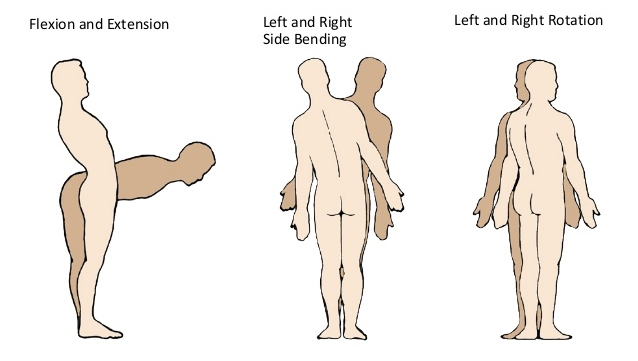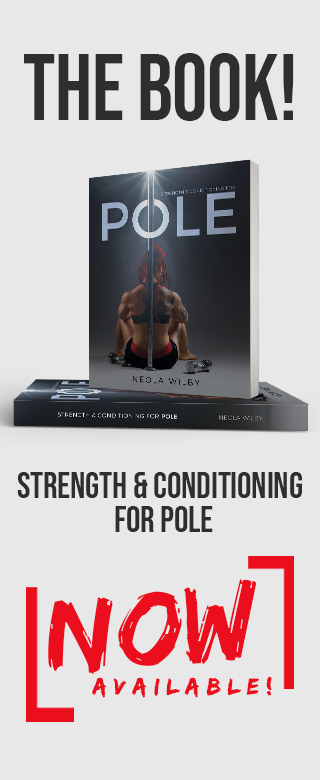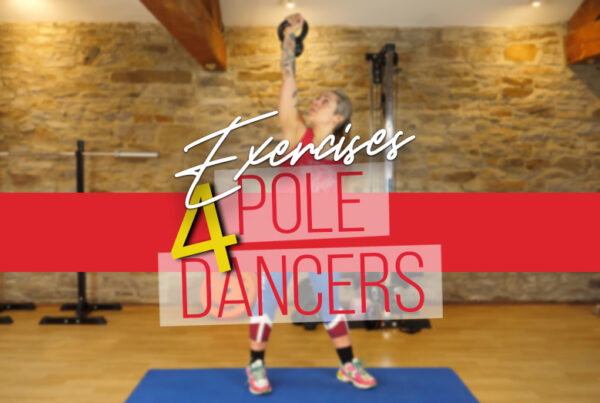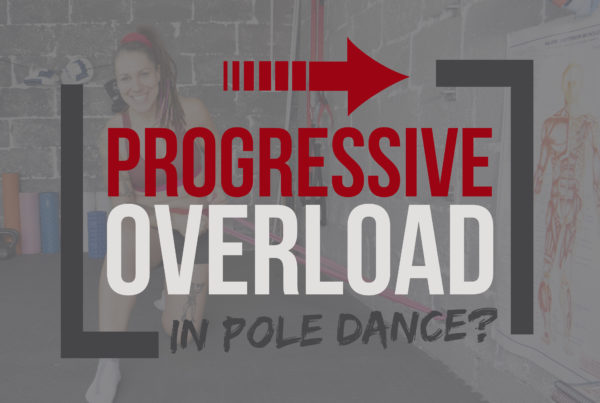Like a Jedi must resist the dark side of the force, we, as polers, are burdened with our own (rotational and gravitational) forces to resist.
The forces are strong. The struggle is real. But if you listen closely, young Padawan, I will explain how rotational forces are trying to scupper your pole moves—and how you can use anti-rotational core training to overcome them.
I’ll stop with the Star Wars references now, promise. 😀
Core training led by function
The way we approach core training in the fitness industry has evolved over recent years. In the 90’s we were all about endless sit ups/crunches and those sweet 6-pack abs, but since then the way we target and train our core has changed. The ‘boom’ in popularity of more ‘functional’ training then led to a revolution in core training.
This change was led by the concept that our abdominal muscles are primarily stabilizers, not movers, so using them as ‘movers’ to create that ‘crunch’ motion is necessarily the most efficient way to train them.
Our anterior core muscles (in other words, those muscles at the front of the body, including abs and obliques) can flex and rotate the trunk of our body, but their real purpose in life is to work with the other core muscles (including our back muscles and hip rotators), to stabilise our spine – in other words, to prevent movement of the spine, not create it.
This more modern approach changed the way we tackle core training dramatically. Core exercises now tend to focus more on preventing unwanted movement of the spine as well as moving our body through bending, flexing and rotating movements like crunches and Russian sits.
Isometric holds like planks, V sits and hollowbody holds are now more commonly used – and in my opinion absolutely should form the biggest part of your core-specific training, alongside more compound movements that incorporate spinal rotation, side bending, flexion and extension with other key elements of like pushing and pulling.
In this blog series, I want to talk about the exercises we use to train that spinal stabilisation (in other words, exercises where we are actively resisting spinal movement).
Our spine needs to be able to stabilise in a few different planes of motion—and many people don’t train their core in all of them.
Spine stabilisation… stabilising what?
Firstly, the spine can extend (think bending backwards). Secondly, it can flex (think rounding forwards). It can also flex laterally (think bending to the side) and it can rotate (think twisting the shoulders or hips to one side).

Our core muscles constantly work to stabilise our spine against these movements when we don’t want them to happen, either when we’re busting out moves on the pole or we’re simply just keeping our body from slumping on the counter whilst waiting in line for a Butterscotch Brulee latte and marshmallow on a stick in Starbucks (shhhh, don’t judge me).
So to strengthen our core, we can train it to be stronger at those stabilising actions.
For example:
- Holding a plank is strengthening the muscles responsible for preventing our spine from extending (bending backwards).
- Side planks strengthen the muscles that prevent our spine from lateral flexion (side bending).
- Other common gym-based exercises like barbell deadlifts help us strengthen the core to prevent flexion (bending forwards).
We traditionally train a lot of moves that address the stabilising muscles for the above three movements. But what about spinal rotation?
Many of us miss out the final component: training the stabilisation of the spine against rotation. And being able to hold the body isometrically against rotation is a really useful skill to have for pole.
Why is anti-rotation training so awesome for pole dance?
Being able to isometrically hold a position against rotational forces is important for pole.
Because the pole is vertical, by its very nature, we tend to hold on to a fixed point with one, two or three contact points so we are constantly fighting against forces pulling us in different directions.
You probably felt it the first time you ever tried to do a one-handed chair spin… tucking up your knees aiming to glide ever-so-gracefully around the pole, but what happened? Your knees just wanted to turn right back in towards the pole instead, right?
Take another example—the shoulder mount. In a shoulder mount, your body is only supported by the pole on one side. It takes a lot of core strength (and upper body strength, of course), to fight against that instability and keep the body in a horizontal position.
Similarly, if you go upside down on the pole and remove the contact points with your feet/legs, so you are holding with only the hands – like in an Ayesha or a pike/straight edge, it takes a brute amount of core strength to keep your hips stable and facing the way we want them to face, rather than twisting down to the floor or back towards the pole.
Basically, rotational forces are constantly trying to ruin our beautiful lines, not to mention all our ‘nailed it’ Instagram photos. To defeat them, our core needs to be really, really good at resisting rotation!
Training anti-rotational strength for pole
There are sooo many great anti-rotational movements out there but I just want to focus on a really simple way that you can change a very familiar movement – a basic plank – into an anti-rotational exercise.
Please note that, before you begin to add anti-rotational elements to your planks, you first need to be really strong in your basic plank. So if your basic plank is still feeling really challenging, stick with stable isometric plank holds until you are strong enough to start adding the instability of rotation forces (a good goal to aim for is 40-60 second holds x 3 sets – once my clients are doing that comfortably, then I’d start progressing the plank holds to incorporate anti-rotation strength like in the example below!
To change a plank from an anti-extension exercise into an anti-rotation exercise, what you need to do is wicked simple – simply take away one point of contact with the floor. This creates instability at one corner of your plank so your body is now having to resist rotation to maintain its hold in a straight line. I demonstrate how this works further in the video above and there is a short example of an anti-rotation plank in the video below—elbow plank with reach.
Building a functional core for pole
Adding instability to core exercises like this not only builds anti-rotational strength, but it also just generally makes us more dynamic and functional for pole. It trains our core to keep our spine stable while reacting to movement/different forces, just like we do when we’re in motion UP the pole!
I hope you found this article useful and I’d love to know your thoughts. Hit me up with any questions in the comments.
Anti-rotation training has some awesome cross-over benefits for polers, but we are all different, with varying mobility and strength limitations and our own unique training schedules, so we all have different starting point. Get good in the basics first!
If you want to geek out with me more on all the different aspects of core strength training for pole dancers, or want to know how to programme your core training for pole, check out my book – Strength and Conditioning for Pole – available now in ebook and hardcopy. It comes with a huge online exercise library and all the pole sports science nerding you’ll ever need to create a functional training programme for pole.
If you want a 6-week training program dedicated to core strength for pole dance, check out my 6-week core strength program for polers – it contains all the progress tests, exercise progressions you need with 3 x super short workouts (15mins) each week that you can do at home with minimal equipment to get your core not just strong but POLE STRONG!









Thank you for the helpful information. Will definitely try. Did you do a guest post on the basicinvert78 blog? The information there is almost identical to your post.
Thanks Izi! 🙂 And, no, I didn’t do a guest blog for them, they just copied it from my site. ????